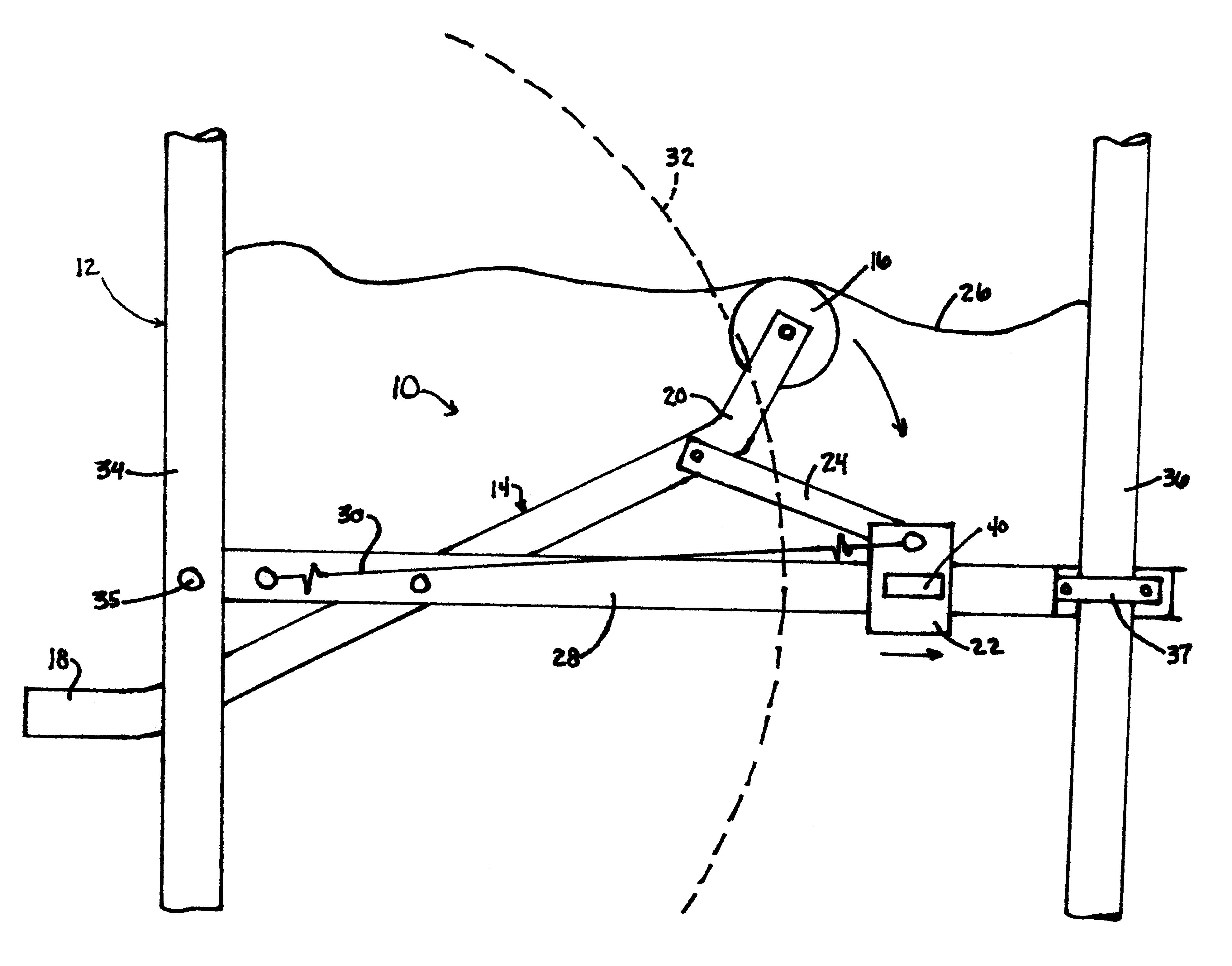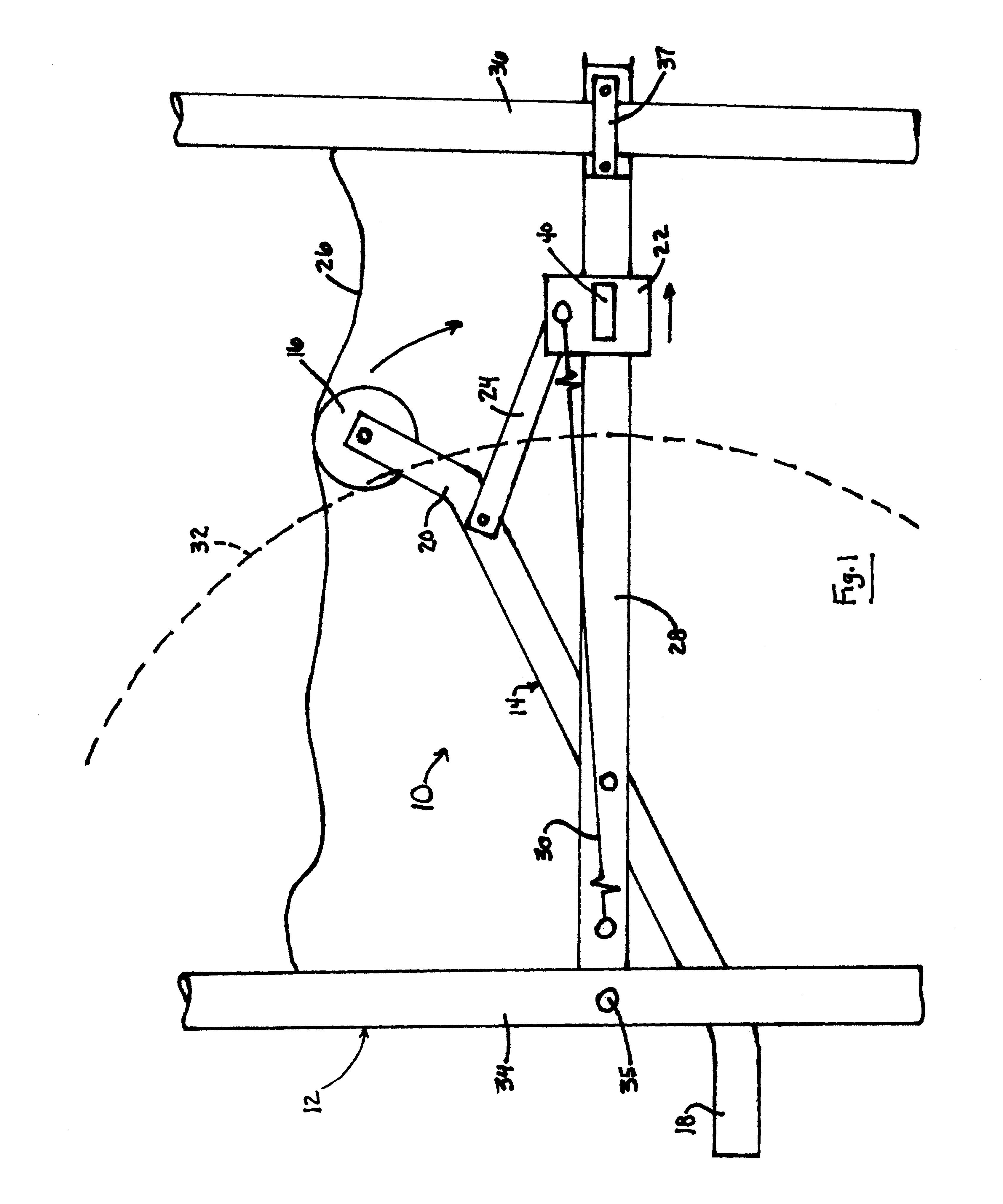Wheelchair braking device
a technology for braking devices and wheelchairs, which is applied in the direction of brake systems, wheelchairs/patient conveyances, friction linings, etc., can solve the problems of significant risk of user falling, braking mechanisms are relatively complicated, and wheelchairs require considerable modification, etc., to achieve the effect of being easily retrofitted
- Summary
- Abstract
- Description
- Claims
- Application Information
AI Technical Summary
Benefits of technology
Problems solved by technology
Method used
Image
Examples
Embodiment Construction
[0013]A wheelchair braking device 10 in accordance with a preferred embodiment of this invention is illustrated in FIG. 1. As shown, the braking device 10 is mounted to a conventional wheelchair 12, whose structure and components need not be modified or removed to accommodate the braking device 10. As such, the braking device 10 is configured to be mountable to essentially any conventional wheelchair, including those designed to be collapsible.
[0014]Though a single braking device 10 is shown, two units of the braking device 10 shown in FIG. 1 are intended to be installed on the wheelchair 12, one on each side of the wheelchair 12 to operate on one of two larger wheels 32 (one of which is shown in phantom). Each device 10 includes a support bar 28 oriented in a fore-aft (longitudinal) direction of the wheelchair 12. The bar 28 is secured to aft and fore vertical frame members 34 and 36 of the wheelchair 12, such as with a fastener 35 as shown for the aft frame member 34 and a clamp 3...
PUM
 Login to View More
Login to View More Abstract
Description
Claims
Application Information
 Login to View More
Login to View More - R&D
- Intellectual Property
- Life Sciences
- Materials
- Tech Scout
- Unparalleled Data Quality
- Higher Quality Content
- 60% Fewer Hallucinations
Browse by: Latest US Patents, China's latest patents, Technical Efficacy Thesaurus, Application Domain, Technology Topic, Popular Technical Reports.
© 2025 PatSnap. All rights reserved.Legal|Privacy policy|Modern Slavery Act Transparency Statement|Sitemap|About US| Contact US: help@patsnap.com


